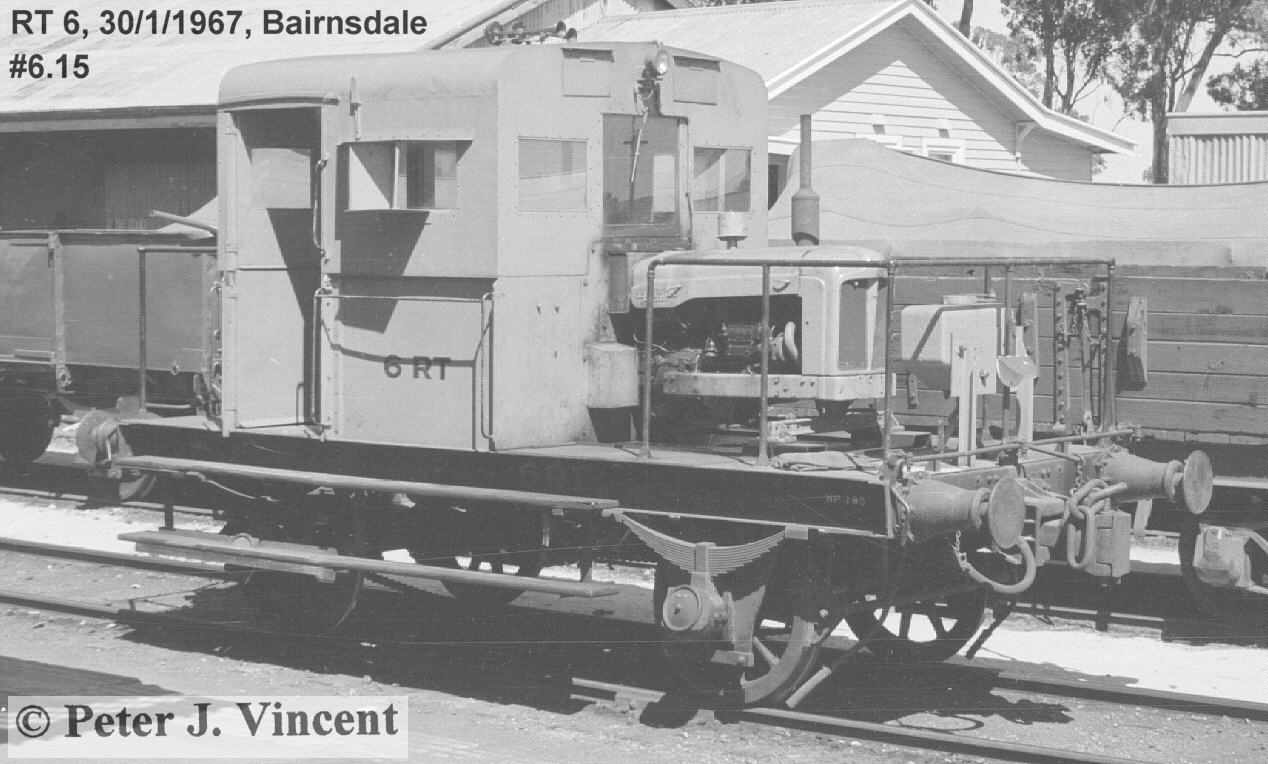

The first rail tractor entered service in 1932. It was a low powered unit with a wooden cab and was used in some line construction.
Between 1957 and 1969 more rail tractors entered service. These units were designed for shunting loose trucks with station limits only and were driven by suitably qualified station staff. They were for general shunting when train engines were not available and they were a replacement for horse shunting.
Most four wheel wagons were fitted with hooks on each side. At large station yards, a horse and attendant were provided to move and spot wagons as required. These were gradually phased out.
On flat ground, The RT maximum load was 200ton; about 10 loaded four wheel wagons.
The rail tractors were built on short wheelbase _I__ wagon underframes. Built onto this underframe was a farm tractor engine and metal cab. The transmission was chain drive to one axle with each axle connected by another chain. A large lever handbrake only was provided. The cab was complete with spring steel supported metal tractor seat. The cab was fitted with external mirrors to allow the operator to view both sides in both directions from the central seat position.
The 1932 rail tractor was No.1 and is currently preserved at the Newport Railway Museum.
RT 2 to 51 were converted ex I wagon underframes.
RT 54 was ex Port of Portland shunter about 1975.
RT 52, 53: author has no information
Most rail tractors were withdrawn from service in the 1980's when freight distribution was removed from many stations and consolidated to regional freight depots.
Some RT's are still in use.
A second rail tractor was built similar to the first design. This tractor was for yard use inside Newport Workshops. From local information the tractor was a failure. The underframe of this tractor still exists at November 2007. It is used as a parts platform.